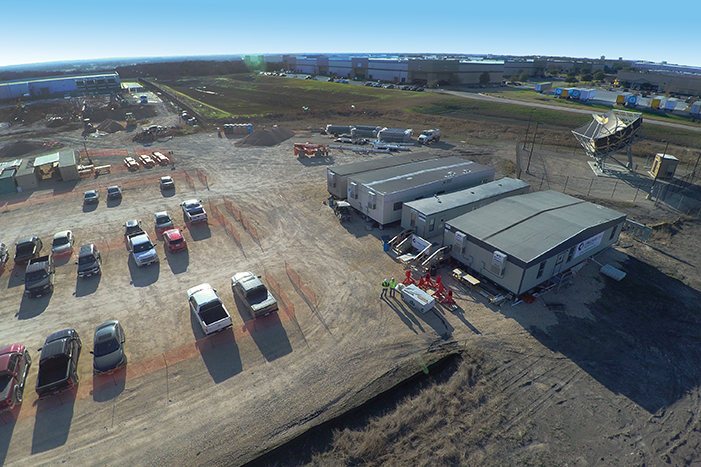Although drones got their start in military operations, they have become engrained in almost every aspect of our culture, from package delivery to wedding photography. Drones are becoming increasingly useful for construction too, especially for large-scale, out of-the-ground projects.
In Dublin, Ireland, the Structure Tone team has been using drones regularly for some of their large mission critical facilities, which include sites up to several hectares in size. “Drones are beneficial in particular for preliminary high-level surveys of hard-to-reach places,” says Jason Monks, Structure Tone Dublin’s Mission Critical project director. “We tend to use them for roof inspections to verify quantities of work completed for both upstream and downstream valuations.”
Drone imagery, says Monks, has also been especially helpful in sharing progress with project owners, many of whom are not local to the project site. “Many of our data center clients are in remote or international locations and do not have the available time to make regular visits to the site to monitor progress. Drone imagery makes those updates easy.”

Sharing project progress is the most obvious benefit of using drone technology. As AmerisourceBergen began construction on their new, 300,000sf offices in Carrollton, Texas, they requested regular drone imagery to see how the massive complex was progressing. “In the past, we would have taken progress photography once a week or so and shown that to our client at meetings,’’ says Jamie Pierce, Structure Tone Southwest senior project engineer.
“But with drones, we can show them the whole picture, not just fragmented pieces. It gives them a really good idea of how the project is moving along, from the site work to the tilt walls and the rest of the exterior.”
But drones have become helpful above and beyond progress updates. Construction teams are now using them in a number of ways to benefit a project.
Planning. Drones can help the construction team map out project logistics, materials delivery or other elements. “If we’re working on a roof we haven’t worked on before, we could fly a drone up there to see where we can put down materials, where we can mark safety tie-offs and other information,” says Ryan Rendon, a Structure Tone Southwest project engineer and licensed drone pilot based in Dallas.
Design. Rendon says he has also had the design team ask for drone imagery as project elements change. “For one of our projects, the architect had no roof access. They asked us to use our drone for some roof shots so they could see exactly what they were working with and how to incorporate that into their design updates.”
Modeling. Similarly, some project team members are using drones to collect information for virtual models. “An excavator we recently worked with used the drone every day,” says Bryankodee Hatcher, another of Structure Tone Southwest’s licensed drone pilots and a project engineer based in Austin. “They would use the drone to laser scan the site and enter that data into their models to see the daily changes in elevations.”
Safety. While it’s not yet standard practice, Rendon says drones could be used to confirm site safety as well. “We could use a drone to make sure anyone working on a high surface is properly tied off and following our safety protocols.”
Community engagement. Drone imagery has also become an incredibly handy marketing tool, particularly for community relations. “We had a TV outside of our construction trailer where we played drone video on loop,” says Rendon. “It was a great way to share what was happening with the project with anyone who was interested.”

Internal communications. Hatcher says his team has even used their drone internally to share information and boost team morale. “In addition to collecting project information, we’ve used the drone for some tasks outside of project requirements. When we had our all-hands safety stand-down, I took photos with the drone.”
Clients have been quick to realize the benefits of using drones. “More owners are going to this drone progress approach, and I think it will soon become standard for ground-up projects,’’ says Hatcher. “From day one to turn-over, we’re able to give our client and the entire project team a very good idea of how a project is progressing.”